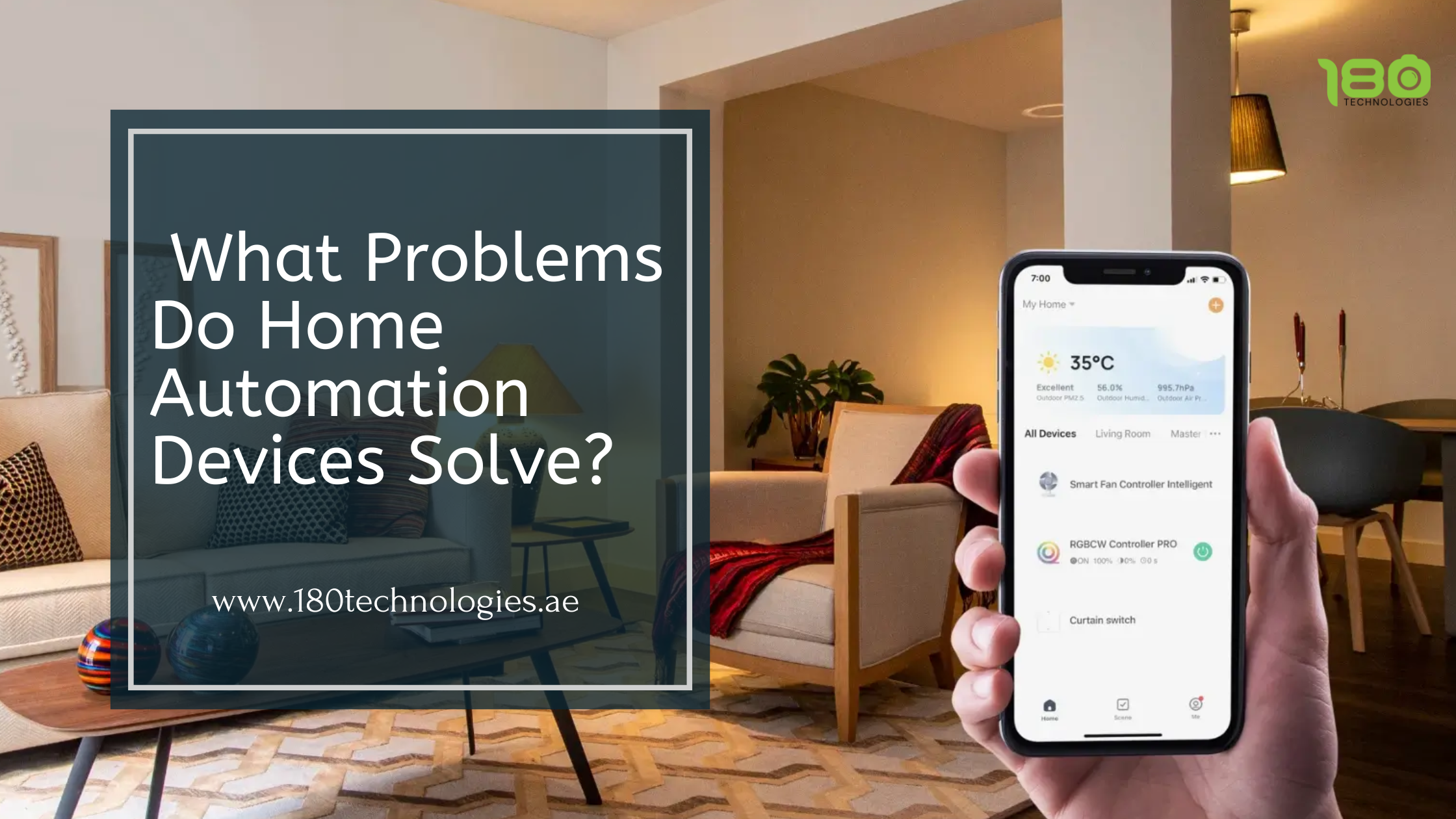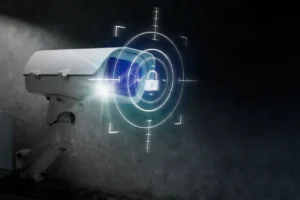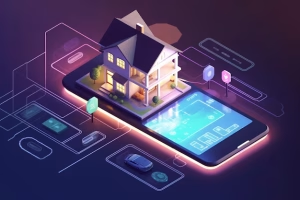Smart home automation is all the rage these days, and we at Gear Gadgets & Gizmos can’t get enough of it. For any technological concept to catch on and truly be adopted by the masses, three simple requirements must be met: people need it, they need it immediately, and they have the money to pay for it. In essence, it must solve a pressing problem or, at the very least, fill a gap.
Returning to smart-home automation, the fact that smart homes are gaining popularity at such a rapid rate implies that they must be solving some important problems and doing so efficiently. Smart houses are now much easier to build than ever before.
What Issue Does Smart Home Automation Address?
Automation ranges from simple systems like smart door locks to more sophisticated systems that connect home security cameras, motion detectors, smart lighting, alarm systems, smart plugs, smart thermostats, and other devices in a single app.
If you’re thinking about making your home smart, keep in mind that smart homes aren’t just ‘cool,’ but they’re also functional, solving a variety of difficulties that homeowners face daily. Let’s take a look at six common problems that your smart home gadgets can tackle.
Discover trending smart home related articles
1.Burglary and home porch thieves
The main reason many homeowners automate their homes is the security (or the lack thereof). According to crime data, about 88 per cent of all burglaries are residential, and only 13 percent of reported instances are cleared owing to a lack of physical evidence or witnesses. Porch pirates are an issue. With more online businesses, such as Amazon, delivering to thousands of doorsteps, it’s getting more attractive for burglars to simply go up, grab the box, and flee.
However, smart home automation gadgets such as a Video Doorbell can help to overcome this issue. Companies such as Amazon, Google, and Ring now provide dependable video doorbell choices that may be integrated into your existing home automation system. A video doorbell is excellent for identifying and deterring porch robbers.
Most models include speakers that allow you to communicate with whoever is at the door remotely and send you a notification when someone approaches your front door. In this manner, if they start picking up the item, you can notify them and inform them that you want to call the police.
Security cameras, motion sensor smart lighting, smart locks, and house alarm systems are just a few of the smart security elements you can integrate into your system to prevent porch theft and burglary.
To help prevent porch pirates from stealing your shipments, portable smart locks like the Boxlock, which can be used with a box on your porch, are now available. A smart lock that allows you to give the delivery man a code for him to place the package in the locked box.
2.Uses the intercom abilities to prevent house screaming.
Communication is one area where smart homes may shine. You’d enjoy a smart home intercom if you’ve ever had to yell from the kitchen every day to let your family know dinner is ready. Intercom features are available on both the Google Home and Amazon Echo smart home hubs, eliminating the need to shout.
Home intercoms have traditionally been complex and inconvenient to install, necessitating wire and poking holes in the wall. However, adding a Google Home or Amazon Echo speaker in each area allows you to effortlessly relay your message using Google Home’s Broadcast or the Echo’s Announce feature.

You can broadcast a one-way message to the rest of the Echos in your home using the announce feature, but no one else can respond to it. Google Home’s Broadcast feature takes things a step further by letting you send a two-way broadcast to which other people can respond.
3.Did I forget to close the garage door?
There is arguably nothing worse than leaving your garage door open when it comes to home security. Most burglars prefer to break in through the garage door, and leaving it open makes it and the rest of your home an appealing target for them
Fortunately, home automation allows you to install smart garage monitoring and controlling devices that will alert you if you leave your garage door open and will allow you to remotely lock it. Chamberlain’s MyQ smart garage door app is one example of such technology.
The app is compatible with Chamberlain smart garage door openers and allows you to manage your garage door remotely from anywhere on the globe. You no longer need to drive back home to check if you forgot to close your garage door with smart garage door apps and systems linked to your home automation system.
You may even set it to close automatically when you leave and open automatically when you return from work.
Okay, Google: Google Home Automation
4.Temperature control in the home
It’s not uncommon to come home to discover your house either sweltering or too cold for your liking. To save money on heating, you would automatically put your standard thermostat low or off before leaving the house (assuming no one is still there) and adjust it accordingly when you returned.
Walking into a cold and uninviting home every day, on the other hand, can be rather frustrating. At times, the children you left at home may become overly comfortable by cranking up the heat a few degrees higher than usual. Kids and individuals you leave in your house who do not pay the heating bills may not realize that those extra few degrees they desire may cost you substantially more when the energy bill arrives.
Smart home automation provides smart thermostats that allow you to keep your home heated or cooled exactly how you want it at all times. You may set your thermostat to lower or turn off heating/cooling when you leave your home for work, and to return to pleasant temperatures minutes before you return home in the evening, using the native app or the smart home automation hub.
Some smart thermostats may even learn your preferred temperatures and change automatically whenever you are present. You can also select the maximum and minimum temperatures to save waste. With companies like Nest Smart thermostat, you can also check if you left your heating on and regulate it remotely.
5.Energy vampires in the home
The term “energy vampire” refers to gadgets that suck power even when they are shut off. When many electrical equipment and appliances are turned off, they continue to require minor quantities of power.
Modern electronics, such as the PlayStation 4 and Xbox One, never entirely shut down. They enter hibernation mode, just like laptops, and can download and install updates or perform other similar tasks in the background.
This may appear to be a convenience, especially if you use your consoles frequently, but it constantly drains power. If you have a lot of other devices in your house, such as a TV, stereo, and so on, the amount of energy lost can quickly add up even if you’re not using any of them.
The usual method is to turn off electricity from individual sockets, but doing so every time you’re not using your devices can be time-consuming. Using a smart plug or switch is the wise option. So you plug all of your devices into your power strip and then into a smart socket and the power source.
With the smart plug, you can remotely turn off any inactive gadgets and prevent them from consuming power unnecessarily. You can also program the plugs to turn on and off at specified times, and some can detect if you leave your devices on after you leave the house and turn them off automatically.
6.Did I leave the lights on (one more)?
Leaving the lights on is a common occurrence that may be both annoying and wasteful. Sometimes it’s because you forgot to turn off a few lights on your way to work in the morning, and other times it’s because the kids turned all the lights on while playing and forgot to turn them off. These are clear indications that your home should be automated.
Home automation allows you to integrate smart lighting into your system, allowing you to monitor and manage your home’s lighting from a smartphone app. Some smart lighting systems can even detect when you’re not present and turn off the lights automatically. Others can be set to turn on the lights every evening and off completely in the morning.
If you want to get a little fancier, some smart light systems, such as the Philips Hue Smart Lighting, will change colour, dim, or create a “movie” scene in response to your instruction or routine. Other brands, on the other hand, include motion sensors that activate when someone walks by.
7.Avoid water damage
Smart home automation not only saves electricity. It can save money by preventing water damage in the event of a leak. Smart home sensors installed into dishwashers, washer machines, and water heaters cut off the water and warn you if it detects a water leak.
Smart water valves are required, but they are simple to install in your home. If your dishwasher, washing machine, or water heater lacks a water sensor, a smart flood sensor can be used. It is a portable device that may be placed on the basement floor or near a hot water tank or washing machine and integrated into a smart hub system.
The list of problems handled by smart home automation does not end here, and depending on the type of devices connected to your system, there may be many other advantages.






